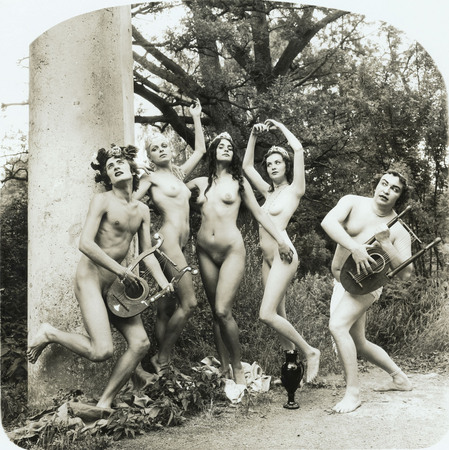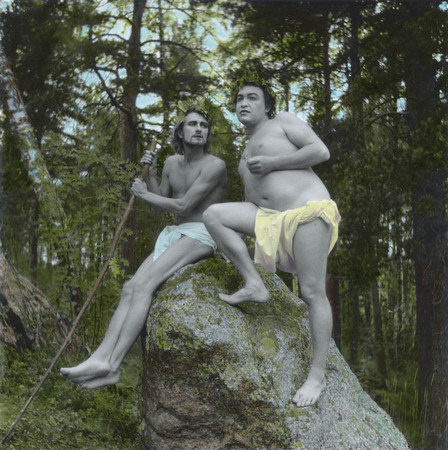Motley Stories
Oleg Maslov, Victor Kuznetsov











Oleg Maslov, Victor Kuznetsov. From “Mysteries of the Holy grove” series. 1995-1996. Author“s collection, Saint-Petersburg
Oleg Maslov, Victor Kuznetsov. From “Mysteries of the Holy grove” series. 1995-1996. Author“s collection, Saint-Petersburg
Oleg Maslov, Victor Kuznetsov. From “Mysteries of the Holy grove” series. 1995-1996. Author“s collection, Saint-Petersburg
Oleg Maslov, Victor Kuznetsov. From “Mysteries of the Holy grove” series. 1995-1996. Author“s collection, Saint-Petersburg
Oleg Maslov, Victor Kuznetsov. From “Mysteries of the Holy grove” series. 1995-1996. Author“s collection, Saint-Petersburg
Oleg Maslov, Victor Kuznetsov. From “Motley stories” series. 1993-1994. Author“s collection, Saint-Petersburg
Oleg Maslov, Victor Kuznetsov. From “Motley stories” series. 1993-1994. Author“s collection, Saint-Petersburg
Oleg Maslov, Victor Kuznetsov. From “Motley stories” series. 1993-1994. Author“s collection, Saint-Petersburg
Oleg Maslov, Victor Kuznetsov. From “Motley stories” series. 1993-1994. Author“s collection, Saint-Petersburg
Oleg Maslov, Victor Kuznetsov. From “Motley stories” series. 1993-1994. Author“s collection, Saint-Petersburg
Oleg Maslov, Victor Kuznetsov. From “Collection of Alm-Tadem” series. 1993-1994. Author“s collection, Saint-Petersburg
Moscow, 18.03.2005—10.04.2005
exhibition is over
Moscow Museum of Modern Art
Petrovka St., 25
Share with friends
Author's collection, Saint-Petersburg
For the press
Oleg Maslov and Victor Kuznetsov work together since 1993. Their collaboration began in connection with a St. Petersburg neo-academic project. They became professors of Timur Novikov’s Academy of Fine Arts, which that same year opened its halls (10, Pushkin St.) to the public. The first exhibition was called «The Blue Lagoon». Both artists showed their jointly-made pictures.
It is important to note that Maslov and Kuznetsov actively use photography and their paintings are based on production photography; they are basically «live pictures» turned into painting. The first project they made together was a happening depicted on black and white film. The artists, along with their children who were not yet of school-age and so reminded of cupids and putti, undressed themselves, leaving only the underpants. Then they tied some bath towels round their waists, put oak-leaf diadems on their heads and asked passers-by to photograph them, just as a pair of lovers or a group of friends might request. It was a warm summer day, there were enough people in a park adjoining a 19th century mansion, so the happening enjoyed some success. The result was a dozen excellent shots, portraying them on romantic bridges, next to decorative ruins and obelisks or in the shade of old alleys.
Portraits and self-portraits in the Neo-Greek style were characteristic of the art of the new academicians since the early 1990s. The most important thing in this genre was an acute sense of modernity, a turn from the ideal (subject, image or a historical setting) towards bodily self-realization. It were precisely the half-naked young men, behaving themselves in the typical manner of the nineties, which breathed new life into the sleepy landscapes, where little changed since the 19th century. What was attractive about these photographs was the spirit of freedom and fun. The park company — soon Maslov and Kuznetsov started staging mass scenes — did not care much for advertising elegance and beauty. On the contrary, they were not concealing their weaknesses or their imperfect constitution.
The next project of Maslov and Kuznetsov was a series of production photographs «New Satiricon», where they created a number of theatrical effects.
In 1995 the artists once more begin their work in palace parks. They now organize plein air sessions involving many people and a load of self-made props, which resemble a collection of the history classes of old academies — helmets, swords, plumes, lyres made of papier-mâché, classical draperies). Their improvised antiquity scenes are shot by Victor Shchurov, a professional photographer. The compositional form of the photographs is made to resemble an old album and they are printed using sepia. The impression of a group of friends having an outdoor party gives way to the artificiality of some soap opera — the artists openly «represent» something like «The Rest of the Spartans», with exaggerated gestures and grotesque facial expressions, so the whole scene resembles a comic opera. The amateur esthetic of a home photo-video is replaced by an inflexible advertising style.
In 1997 they show their paintings, water-colors and photographs in interiors, as if in an artist’s studio, in Amsterdam’s Stedelijk Museum. At the same time, in the neighboring Van Gogh Museum, a retrospective exhibition of Sir Lawrence Alma Tadema, a fashionable painter of the second half of the 19th century, is taking place. His canvases, representing good-looking bourgeois women poising as Roman ladies in atriums and pools, or on the banks of the Tiber, strike Maslov and Kuznetsov as something very close to their ideal. This is why their latest series is called «The Alma Tadema Collection». It is created in collaboration with Rainer Boehme, who is a post-graduate in the New Academy. Boehme was born in Dresden and later studied perception philosophy (Wahrnehmungslehre) in the University of Vienna. His treatment of Maslov’s and Kuznetsov’s performances is made in a soft and pastoral manner. For the first time in the history of this duet, the photographer, shooting their classical parties, conveys the effects of natural light, of scattered sunlight, combining the groups of figures and historical landscape in the traditional romantic atmosphere of old paintings. Boehme uses an antique «Zeiss» produced in the 1900s, which makes very sharp images with scattered soft luminescence on the borders. This camera is very good at conveying the texture of the skin, draperies, palace walls and iron fences, on which the artists settle like fauns. At the same time it gives a glowing effect, which reminds of painting. The result is that we see the quality of an authentic historical stylization, a pastiche in the manner of Alma-Tadema, but with a renewed impression of originally careless, casual and forceful way of modern life, which was evident in the 1992 shots.
The photographic sessions, interrupted on many occasions by the police for offending public morality, took place in the park of a palace in the Novy Petergof that used to be owned by the Princes of Leichtenberg. Since the 1920s it belonged to the Biological Faculty of the Leningrad University. In the late 1920s in Leningrad there was published a novel by Konstantin Vaginov, a young writer, close to the famous OPOIaZ circle of philologists, to Mikhail Bakhtin and other experts on the theory of new artistic language. These people were also connoisseurs of classical art and especially of the cultural traditions of St. Petersburg, considering it the northernmost center of classicism. Vaginov’s novel was called «Goat Song», thus bringing to mind Greek theatre. Its heroes, admirers of Hellenism, had a particular liking for tasteless things (Alma Tadema’s works surely belong to this category) and organized meetings on a dacha in this same Novy Petergof. They dreamed of St. Petersburg as a neo-classical city, where the mores and customs of ancient Greece and Rome are revived. Seventy years later, upon the arrival of a new Russian freedom, the bohemian duet of Oleg Maslov and Viktor Kuznetsov decided to revive this philosophy of life of the great Russian city, which is nurtured by the energy of a unique combination of barbarity and an extremely refined, sleepy classical style.
Yekaterina Andreeva


